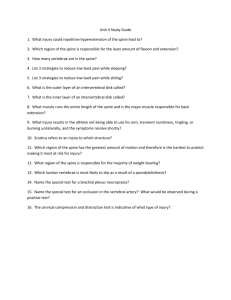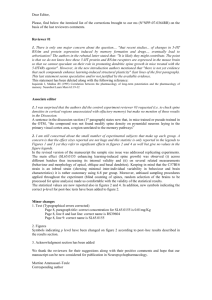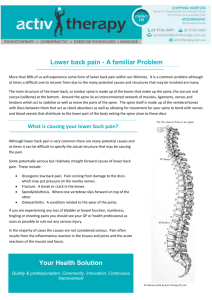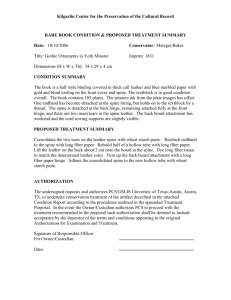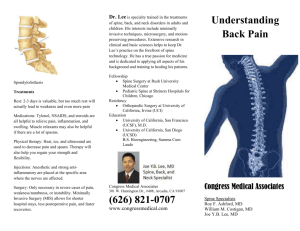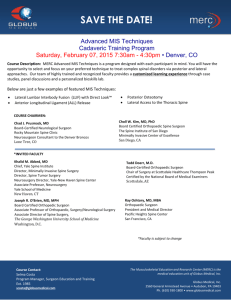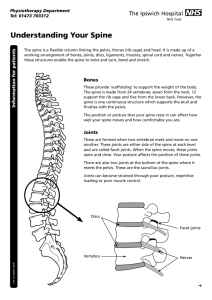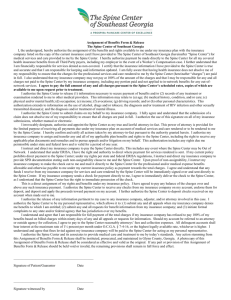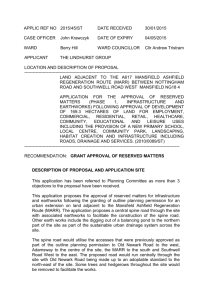Handling rare books and manuscripts The preservation of special
advertisement
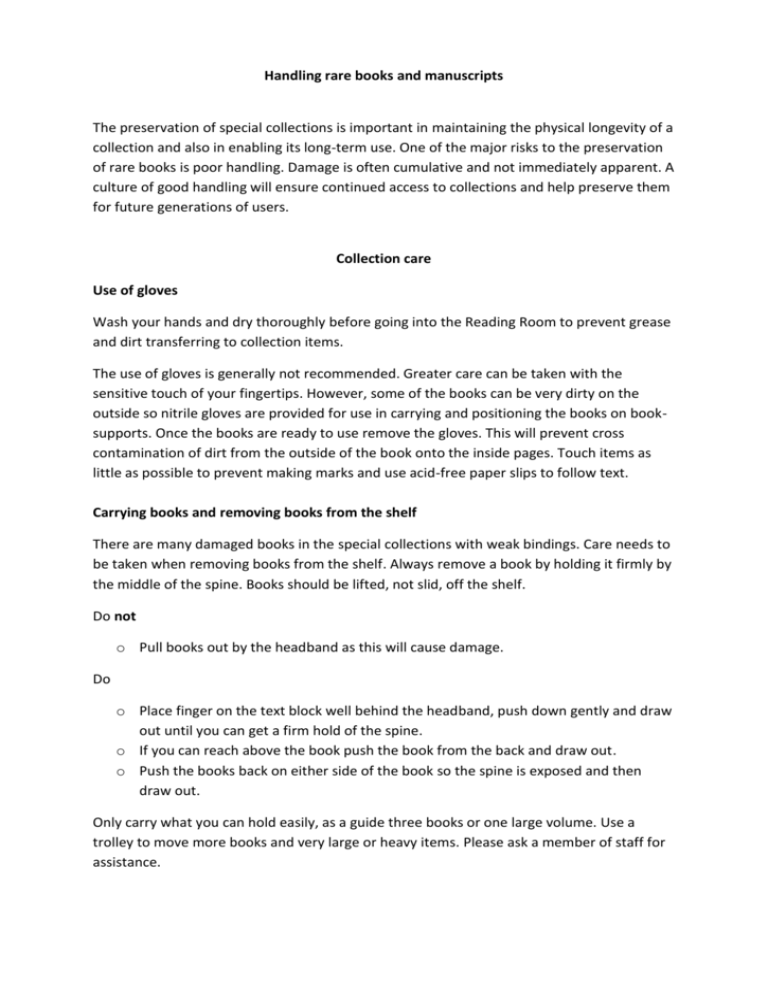
Handling rare books and manuscripts The preservation of special collections is important in maintaining the physical longevity of a collection and also in enabling its long-term use. One of the major risks to the preservation of rare books is poor handling. Damage is often cumulative and not immediately apparent. A culture of good handling will ensure continued access to collections and help preserve them for future generations of users. Collection care Use of gloves Wash your hands and dry thoroughly before going into the Reading Room to prevent grease and dirt transferring to collection items. The use of gloves is generally not recommended. Greater care can be taken with the sensitive touch of your fingertips. However, some of the books can be very dirty on the outside so nitrile gloves are provided for use in carrying and positioning the books on booksupports. Once the books are ready to use remove the gloves. This will prevent cross contamination of dirt from the outside of the book onto the inside pages. Touch items as little as possible to prevent making marks and use acid-free paper slips to follow text. Carrying books and removing books from the shelf There are many damaged books in the special collections with weak bindings. Care needs to be taken when removing books from the shelf. Always remove a book by holding it firmly by the middle of the spine. Books should be lifted, not slid, off the shelf. Do not o Pull books out by the headband as this will cause damage. Do o Place finger on the text block well behind the headband, push down gently and draw out until you can get a firm hold of the spine. o If you can reach above the book push the book from the back and draw out. o Push the books back on either side of the book so the spine is exposed and then draw out. Only carry what you can hold easily, as a guide three books or one large volume. Use a trolley to move more books and very large or heavy items. Please ask a member of staff for assistance. Using the books: Book bindings and book supports Place open books on the book supports and use snake weights to gently hold the pages open. Most books are not designed to open flat and forcing them will cause damage to the binding and spine. There are three styles of binding that need support in different places: Flexible tight-back (A) The spine cover moves which allows the book to open flat but the constant flexing can cause the binding to crack, the majority of the pressure is placed on the spine of the book. Book support: The foam spine support provides gentle support along the length of the spine, which is particularly vulnerable to damage. Rigid tight-back (B) The rigid tight-back is more solid and prevents the spine from cracking but when opened the pages fan out rather than lie flat and it is more difficult to read. Book support: the spine is un-supported between the foam wedges but the boards and joints are fully supported. Hollow-back (C) The hollow back was first used in England around 1790, the binding material is not glued to the text block. It opens well but more strain is placed on the joints. Book support: the spine is positioned between the foam wedges so that it does not get crushed but the board and joints are supported. Images taken from the British Library Preservation Advisory Centre booklet ‘Bookbindings’, 2010 © The British Library @ http://www.bl.uk/blpac/pdf/bookbindings.pdf Handling folios and large manuscripts Ensure there is enough space to work and that items do not overhang the desk. Do not place anything on top of them. Make use of the weights and supports provided to make handling easier and ask for help in moving items if needed. Work space o o o o o Keep your work space tidy. Close books which are not being used. Ensure laptop leads are kept away from collection items. Stack books properly, only closed books should be placed one on top of the other. Ensure nothing overhangs the desk Photocopying Rare books in the special collections are not to be photocopied using the flat-bed photocopiers in the library. Placing bindings face-down at 180° will cause damage to bindings. Alternatively, items may be photographed without the use of flash, which allows the book to be copied face-up while supported by the foam wedges. Permission must be sought to photograph any item. Photocopying of other reference-only material in the closed access vault is done by Special Collections staff. Please note that the physical condition of an item may prohibit any copying. Please note: Request forms including details of charges for copying and any postage costs are available from the Reading Room. All orders will be processed promptly, but readers should expect to wait up to three days.
